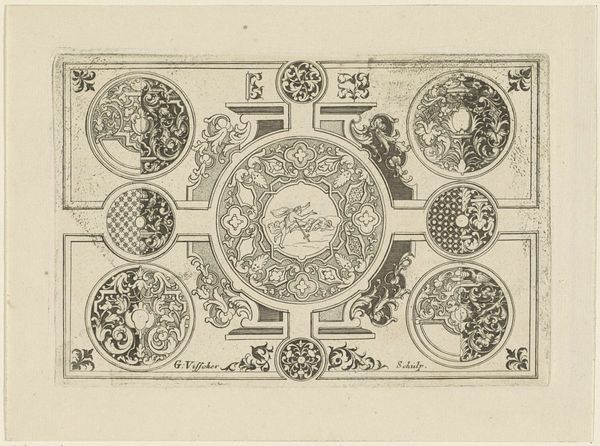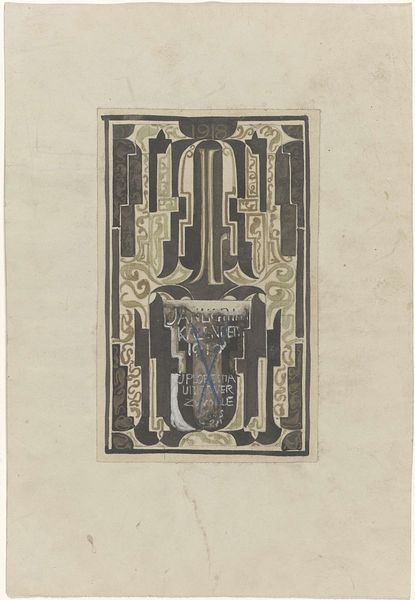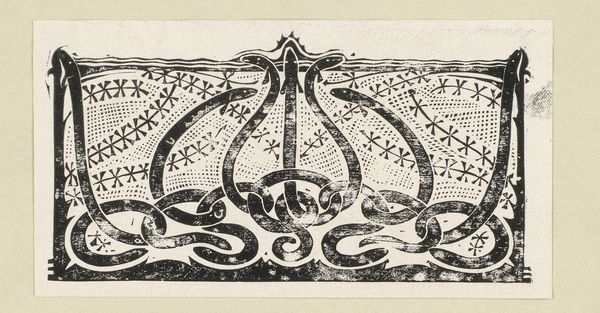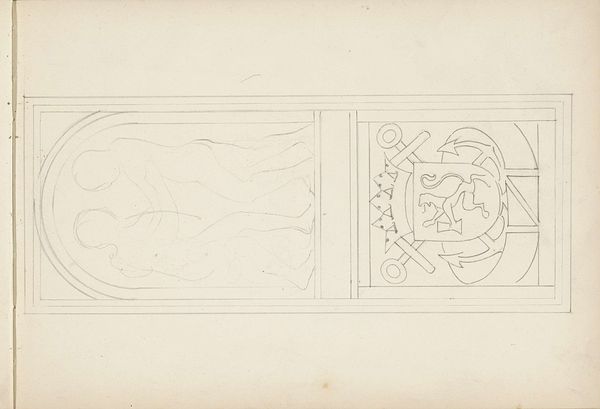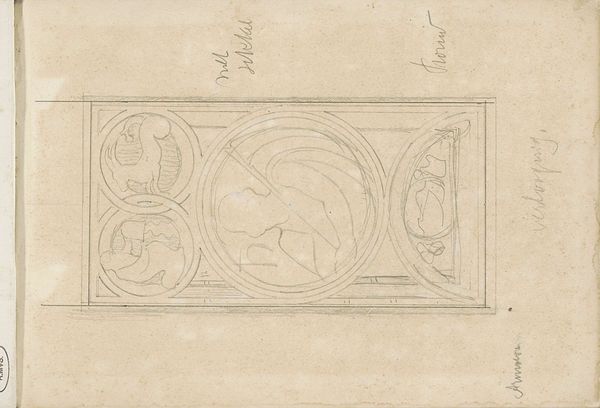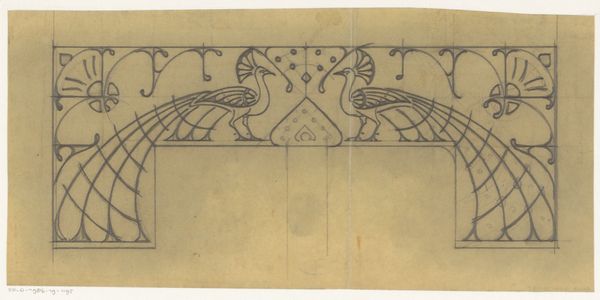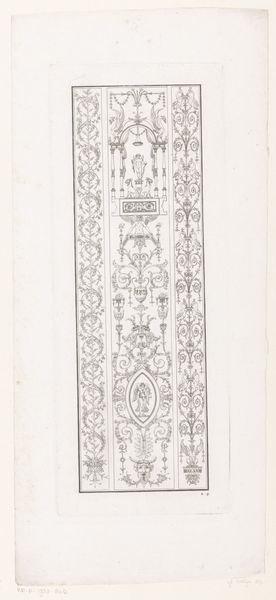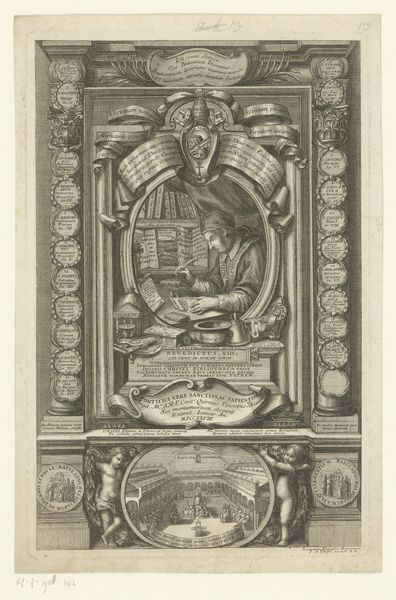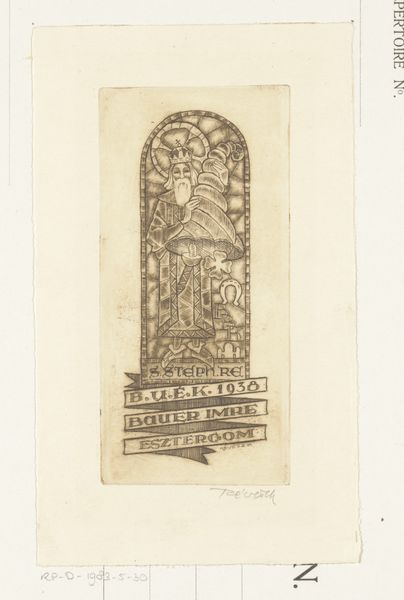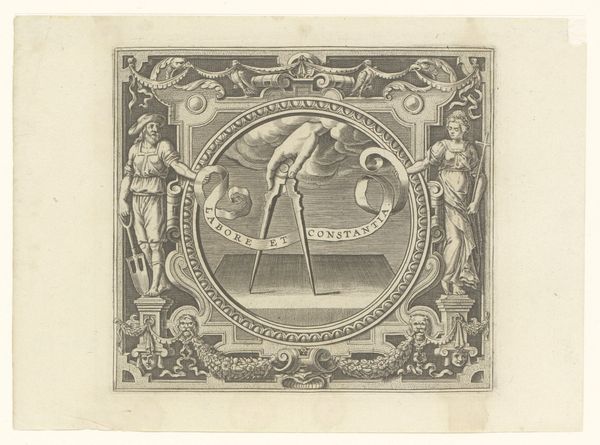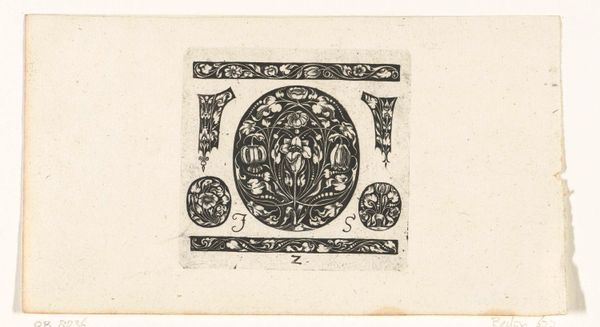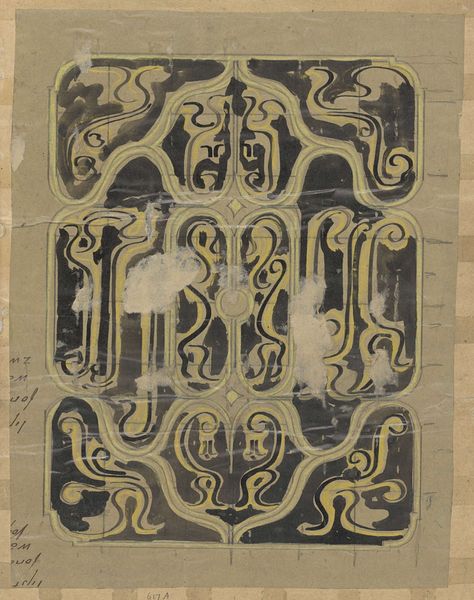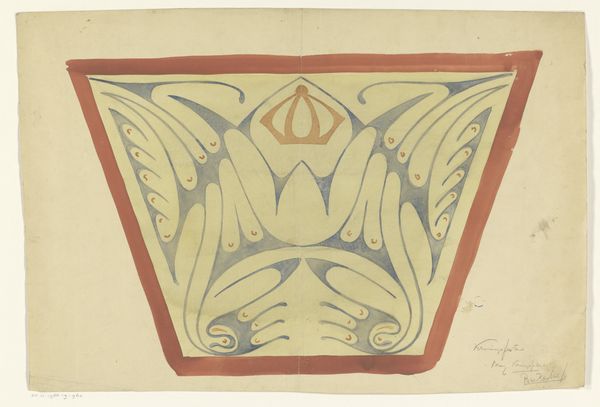
drawing, typography, ink, pen
#
drawing
#
art-nouveau
#
pen drawing
#
pen illustration
#
pen sketch
#
ink line art
#
typography
#
ink
#
pen-ink sketch
#
line
#
symbolism
#
pen
#
decorative-art
Dimensions: height 250 mm, width 365 mm
Copyright: Rijks Museum: Open Domain
Curator: What strikes me first is its graphic quality – very linear, almost skeletal, and yet undeniably elegant. Editor: You’ve hit upon its key appeal, I think. This is Jan Toorop’s preliminary design for the cover of Louis Couperus’s “God and Gods,” created sometime before 1903. Executed in pen and ink with some typography, it’s a potent example of Dutch Art Nouveau. Curator: Art Nouveau…yes, but not the overly floral kind. The figure is almost incidental. The real focus seems to be the lettering woven within those whiplash curves. There's a pronounced emphasis on text and decoration acting together. What statement did Toorop make at this cultural moment by taking on this kind of project? Editor: It reflects the era's fascination with intertwining aesthetics and literature, especially those novels exploring complex moral issues and a renewed interest in ancient belief systems, just like Couperus’s “God and Gods." The decorative-art is interesting since he embraces symbolism so effectively: a very lean sinuous female figure that gives the design a sort of austere sensuality, quite bold given prevailing social codes. Curator: The goddess figure’s centrality does raise questions, though. Was she intended to challenge traditional gender roles or simply represent an idealized, passive form of beauty? We should question the place of feminine beauty inside narratives that historically serve power dynamics, particularly if they end up normalizing conventional body types, despite some subversive compositional moves. Editor: Agreed. It requires constant interrogation. This particular figure could signify the allure and deception inherent in ancient myths. And I agree that in its own time, even such "subversive" aesthetic expressions can simultaneously reinscribe patriarchal values, depending on the artist's intentions and cultural context. The book and the cover exist as products within their culture. Curator: So, we have to question whether the Art Nouveau, decorative style is used simply to promote this specific volume for sale and what impact that commericialisation has. How can art be challenging if it has to participate to market pressure? What is its influence on the contemporary artistic world? Editor: These remain questions that resonate now, as we constantly negotiate the roles art and aesthetics play within wider social narratives and power structures. It encourages a continued dialogue between art, history and contemporary theoretical movements and a study in art itself. Curator: It is fascinating how art always brings so many perspectives and so many interrogations. Editor: Exactly. Which makes our engagement so necessary.
Comments
No comments
Be the first to comment and join the conversation on the ultimate creative platform.
